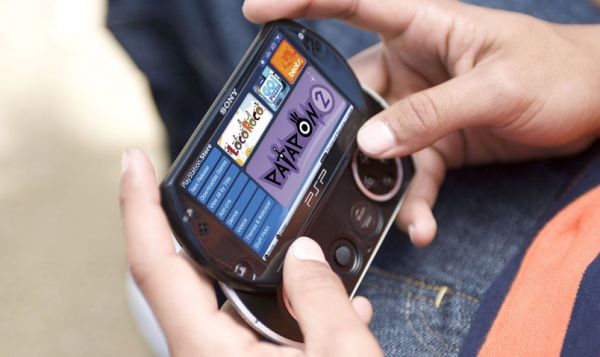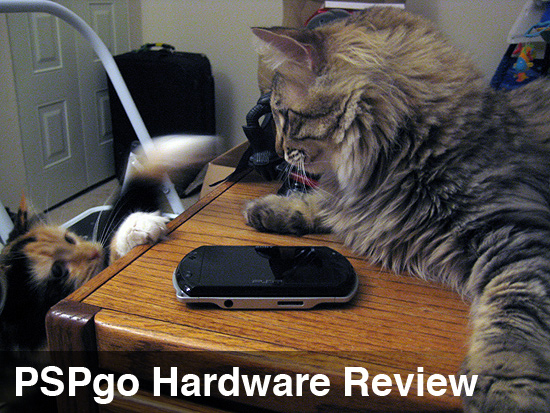Ah, hardware revisions! This year has been full of them, and between Xbox SKU realignment, PS3s shedding weight, the DSi and now the PSPgo, gamers all over have had to stare wistfully at their wallets and make some decisions on whether to drop some scratch on new toys or hold out for the Next Big Thing. Luckily, we here at Co-Optimus HQ are filled with gadget envy and the opportunity to review new hardware was just the excuse I needed to pick one up.
In the interest of full disclosure, I will reveal that my PSPgo was acquired via massive amounts of store credit.
The biggest thing you'll notice with the PSPgo is the drastically altered form factor. It's sleek, sexy and surprisingly light. Sliding up the screen reveals the usual controls, though the D-pad and buttons are now low-profile and snappy, similar to the DSi. The buttons that normally adorn the bottom of the screen are now spread across the top of the device, with the WLAN and power switches being relocated to the left and right sides of the system, respectively.
Upon powering up the system, you'll see two things. First, the screen is absolutely gorgeous, with vibrant colors practically jumping out at you. Even though it's slightly smaller than the standard PSP, it ends up working to the PSPgo's advantage, as everything will appear just that much sharper. Second, you will realize that nothing has changed with Sony's PSP strategy, as there will be a firmware upgrade waiting for you as soon as you connect it to the PSN store.

Speaking of the PSN store, get used to spending time there, as it is where all of your game purchases will be made, whether it's on the PSP unit itself or through a PS3 if you own one. Download speeds seem to vary wildly, since the store is getting hammered with traffic due to the massive amount of new content Sony has been offering in preparation for the Go's launch. Unfortunately, there is still no option for background downloading in the PSP firmware, so downloading via a PS3 would be preferable if you have that option. Once a download completes, there will be an install phase, which can take anywhere from 20 seconds to a few minutes.
Fortunately, once you've downloaded/transferred/installed all your games, you can run everything from the system memory, and though load times don't seem to be drastically faster than the UMD-based system, it's just great to be able to access your library from one location. The 16GB goes a long way towards building a large, quickly accessible library, though the system software curiously appears to reserve 2GB for itself. The memory is upgradeable via Sony's new M2 Memory Stick, which is of course, incompatible with the existing Memory Stick.
My favorite feature of the PSPgo has got to be the "Pause Game" feature added into the PS menu. While sleep mode can suffice, the Pause feature allows you to create a save state in the system memory, turn the system on and off, change games, watch a video and then load the save state to pick up right where you left off. This is particularly handy for PS1 titles and PSP games without any suspend save options. Another fun, albeit odd feature is the ability to sync a SIXAXIS or DualShock 3 controller to the PSPgo via its Bluetooth connection, allowing for full control of the system while it is closed. The times you might use this feature are probably few and far between, but since you can hook PSPs up to a television, it makes a sort of portable console.
